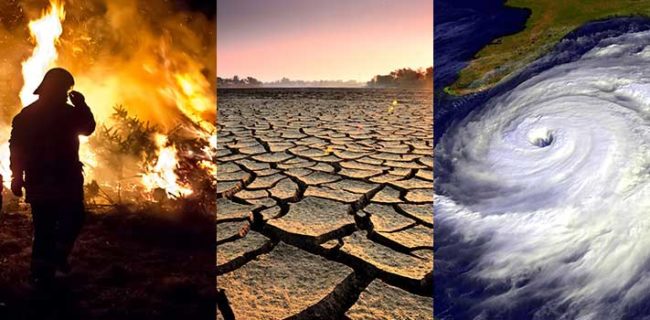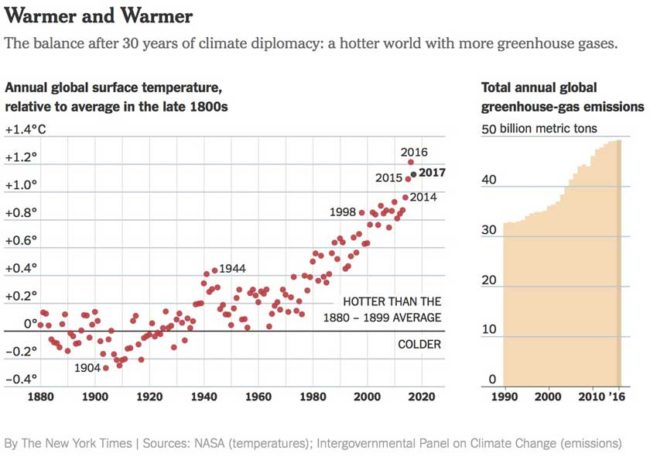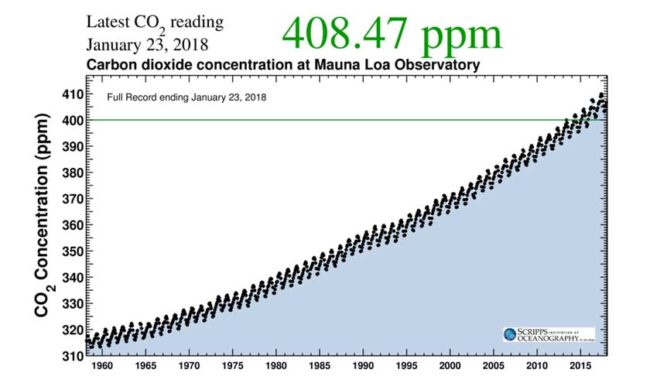Starting with 1988, he basically lays out the specific actions that have been taken to seriously address the Climate Change challenge we now face, but puts that up against a measuring rod to see how we have actually been doing.
In 1988, he points out that on average we were globally about half a degree (Celsius) above the average of the last two decades of the 19th Century. It is also estimated that we were at that point in time churning out about roughly 30 billion tons of carbon dioxide.
Progress?
To cut to the chase, between then and now we have had various international agreements to seriously address the issue, for example the 1997 Kyoto agreement and the more recent Paris agreement, so have we managed to get on top of the problem? It has all added up and led to a reduction in our overall CO2 emissions and we are starting to see global temperatures decreasing and reverting back to normal ….. oh wait, that’s not quite how things have panned out.
Yes it is true that there was a Kyoto agreement in 1997, and also the far more significant Paris Agreement. The latter was formally adopted in December 2015 and then became legally binding in November 2016 because enough nations had committed themselves to adhere to what they had promised that they would do.
At about the time of the Paris agreement, the global rise in temperatures had climbed from about half a degree to roughly about 1.1 degrees (Celsius) above average and our CO2 emissions had globally climbed from the 30 billion tons to roughly about 50 billion tons per year.
The ongoing trend has not paused
The words can of course describe it, but a graph is what really highlights the point …
… and just to drive the point home, if you surf on over to the Mauna Lao observatory where they measure CO2 level within the atmosphere, then yes indeed the actual amount of CO2 is still increasing and is not showing any sign of flattening or even slowing down a bit …
Illusions of Progress
So the point is this …
While the world frets over President Trump’s decision to withdraw the United States from the Paris agreement, I would argue that the greatest impediment to slowing this relentless warming is an illusion of progress that is allowing every country to sidestep many of the hard choices that still must be made.
… and that quite frankly is a good reality check.
OK, so what actually happens if we add up all the existing Paris Agreements, and also assume everybody sticks to everything, will that then solve the Climate Change problem?
In short … no, the existing agreement is simply not enough …
The predicted 2030 emissions will, even if the Paris pledges are fully implemented, place the world on track for a temperature rise of 2.9 to 3.4 degrees this century.
… the numbers simply do not add up and so clearly we will need to do more, a lot more.
Mr Porter puts it like this …
Inveigled by three decades of supposed diplomatic progress — coupled with falling prices of wind turbines, solar panels and batteries — the activists, technologists and policymakers driving the strategy against climate change seem to have concluded that the job can be done without unpalatable choices.
What is perhaps inevitable is that as the consequences of not doing enough play out, we will see minds becoming increasingly focused upon the issue and so we will inevitable turn to more decisive realistic actions. That however will probably be too late to prevent some rather dire outcomes.



